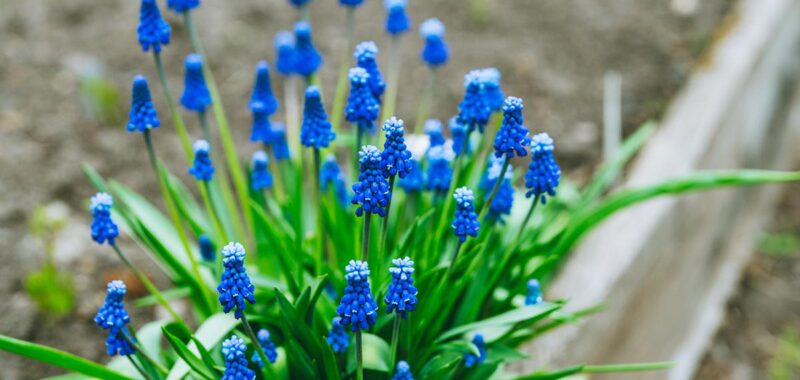Grape hyacinths are a beautiful addition to the early spring garden.
Stout stands of tightly clustered flowers bloom in bright shades of blue, purple, white, and even yellow and have a delicious, fruity fragrance.
These little plants make a reliable addition to beds, borders, and containers and naturalize readily in meadows, woodlands, or just about anywhere they’re scattered. And they’re delightful for forcing indoors as well!
Wonderfully low maintenance and easily cultivated, propagation is also easy.


On their own, your collection will increase yearly from natural bulb multiplication and a ready habit of self-seeding.
But these hearty bulbs also love to be transplanted and respond quickly to division with fast, vigorous growth.
They’re even easy to start from seed – although you’ll have to wait at least three years for flowers on seed-started plants.
Don’t know how? No problem. We’ve got you covered!
Here’s everything you need to know about grape hyacinth propagation for bulbs and seeds.
Grape Hyacinth Basics
Muscari is a genus of small flowering bulbs, native to rocky slopes of Eurasia and the Mediterranean basin.


Growth is typically six to 12 inches high and plants develop one to three flower stalks in early spring. Flower colors are primarily blue and white, with some cultivars offering mauve, pink, and yellow blooms.
As their common name “grape hyacinth” suggests, the flower racemes are tightly packed, urn-shaped florets that resemble small clusters of grapes.

